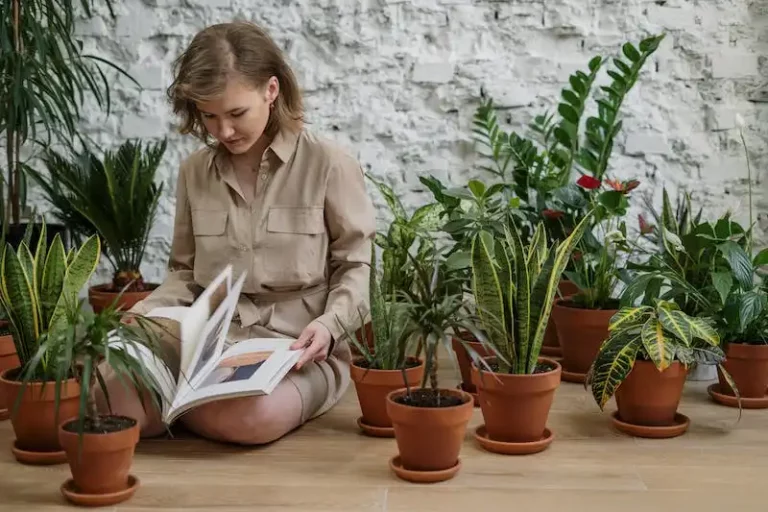If you’re a fan of miniature vegetables, then walking onions, also called Egyptian onions or tree onions, might be just what you’re looking for. These unique plants produce bulbils, or miniature bulbs, at the top of their stems instead of flowers. Although they look similar to the common iris, don’t be fooled – they are not the same. Unlike their iris counterparts, walking onions have a distinct ability to “walk” or spread across your garden, making them an interesting companion for other vegetables.
When growing walking onions, it’s important to know that they are perennials, meaning they can live for many years with proper management. These onions are easy to grow and require little maintenance. They prefer well-drained soil and should be planted in full sun, but they can also tolerate some shade.
One of the fascinating features of walking onions is their unique method of reproduction. As the bulbils on the head of the onion mature, their green tips turn into smaller onions. Once ripe, these onion sets will “walk” to new places, often conveniently planting themselves between other plants in your garden.
Walking onions are best planted in late summer or early fall. Once they are established, they require minimal care. They are resistant to common pests like thrips and believe it or not, they are also immune to the onion fly, a common pest of traditional onions. This makes them a great choice for organic growers. While the bulbils are pungent and can be eaten, the greens of the walking onion are also edible and can be used to enhance the flavors of sauces and other dishes.
As the name suggests, walking onions can grow to a height of 2 to 3 feet, with the bulbils at the top of the stem. When the plant reaches maturity, the main onion bulb grows deeper underground than most traditional onions. This unique feature allows the plant to keep producing new bulbils year after year.
So, if you’re looking for a unique and low-maintenance onion variety to add to your garden, give walking onions a try. Their ability to “walk” and their pungent flavor make them a standout in any garden. Plus, their long-lasting nature and interesting growth habits make them a great conversation piece for gardening enthusiasts.
Walking Onions: How to Grow, Eat, and Benefit
Walking onions, also known as Egyptian onions or tree onions, are a unique and fascinating vegetable to grow in your garden. These perennial plants can add a touch of beauty and interest to your landscape, all while providing you with a dependable harvest year after year. In this article, we will explore how to grow, eat, and benefit from walking onions.
Growing Walking Onions
Walking onions can be grown in various settings, but they prefer well-drained soil with good fertility. They should be planted in an open space, with a spacing of around 12 inches between each plant. Walking onions can be grown directly in the ground or in raised beds. They tolerate a variety of soil types, but the soil should be rich in organic matter and have a pH level between 5.5 and 7.0.
Walking onions can be directly sown in the soil in late summer or early fall, ensuring they have enough time to establish their roots before winter. To ensure a successful harvest, it’s important to provide the onions with consistent moisture throughout their growing season.
Harvesting Walking Onions
Walking onions are unique in that they produce multiple bulbils or sets per stalk, which can be harvested and replanted to produce new plants. These bulbils are small onions that sprout at the top of the stalks. When the bulbils mature in early summer, they can be harvested and replanted in a new location, or they can be left on the stalks to produce a new round of walking onions.
The stalks of walking onions can be harvested when they reach a height of 12-18 inches. The best time to harvest is just before the bulbils sprout. The stalks can be cut at ground level or pulled out of the ground. The mature stalks can be eaten or used to flavor soups, sauces, or other dishes.
Eating and Benefiting from Walking Onions
The flavor of walking onions is similar to that of regular onions, but with a milder and sweeter taste. The bulbils can be eaten raw or cooked, and they add a unique touch to salads or stir-fries. The stalks can be used in various recipes, and they can be stored for several weeks in a cool and dry place.
Growing walking onions not only provides you with a delicious and unique vegetable, but it also offers numerous benefits. These plants are excellent for attracting pollinators to your garden. They can also help control weeds due to their vigorous growth and the shade they provide. Walking onions are also a great scientific experiment for those interested in observing plant growth and unusual reproductive strategies.
In conclusion, walking onions are a fascinating plant to grow, eat, and benefit from. Their unique ability to “walk” and produce multiple sets make them a valuable addition to any garden. Whether you are a seasoned gardener or a beginner, walking onions can offer an interesting and rewarding experience.
About Walking Onions
Walking onions, also known as Egyptian onions or Allium x proliferum, are a variety of onion that have unique characteristics compared to common onions. These onions were originally native to the region that is now Egypt and were a common food source for ancient Egyptians.
One of the main differences between walking onions and common onions is that walking onions produce small bulblets at the top of the stalks. These bulblets can be harvested and replanted to grow more onions. The name “walking onions” comes from the fact that the bulblets on the stalks eventually become heavy enough to cause the stalks to bend to the ground and replant themselves, creating a new patch of onions.
Walking onions are clump-forming plants, meaning that they grow in clusters or clumps. They have green stalks and the bulblets grow at the top, creating branches that carry multiple bulblets. The underground parts of walking onions, such as the bulbs and roots, continue to grow and multiply over time, making them a perennial plant that can survive year after year.
When it comes to growing walking onions, they have specific requirements. They prefer full sunlight and need well-drained soil to thrive. Walking onions can tolerate cold and snowy conditions, which make them a great option for colder climates. They can also grow in a variety of soil types but prefer fertile soil for optimal growth.
Harvesting walking onions is a unique process. The bulblets on the stalks can be harvested once they reach maturity, which is typically in the late spring to early summer. To harvest the bulblets, gently pull the stalks away from the clump and remove the bulblets from the bottom. Freshly harvested walking onions can be eaten directly, and the greens can be used for cooking. For longer storage, let the bulblets dry on a paper towel and store them in a cool, dry place like you would with common onions.
Walking onions are known for their hardiness and ability to withstand diseases and pests better than other onion species. They are a popular choice for home gardeners and larger-scale growers alike, as they require minimal management and can increase their crop each year through the bulblets. The unique flavor and versatility of walking onions make them a valuable addition to any garden or kitchen.
| Walking Onion Care Tips |
|---|
| 1. Plant in well-drained soil |
| 2. Provide full sunlight |
| 3. Harvest bulblets in late spring to early summer |
| 4. Dry harvested bulblets and store in a cool, dry place |
| 5. Use the greens for cooking |
| 6. Replant bulblets to increase crop production |
| 7. Enjoy the unique flavor of walking onions in various dishes |
Growing Walking Onions
If you want a unique and interesting addition to your garden, consider growing walking onions. Also known as Egyptian onions or top-setting onions, these plants produce small bulbs that form at the top of the stalks, above the normal onion bulb. Here are some tips on how to care for and grow walking onions.
- Walking onions are easy to grow and require minimal care. Plant them in a sunny location with well-draining soil.
- The best time to plant walking onions is in the fall or early spring. Dig a hole that is about 2 inches deep and plant the bulb about 1 inch away from the edge of the hole.
- Once planted, the walking onions will begin to grow. The topsets, or tiny bulbs, will eventually sprout and form new plants.
- One unique characteristic of walking onions is their ability to “walk” or spread to nearby areas. As the topsets grow, they become too crowded and heavy for the stalk to support. This causes the plant to bend over and the topsets to touch the ground, where they can take root and produce a new plant.
- Although walking onions tend to be taller than regular onions, they can also be harvested and used just like normal onions. The main difference is that you can also harvest the topsets.
- Walking onions are more resistant to diseases and pests than other onion varieties. They are not commonly affected by fungal diseases or pests like aphids. However, they can benefit from a solution of walnut leaves, which acts as a deterrent for pests.
- Harvesting the topsets can be a fun and rewarding task. Simply grasp the stalk near the topset and pull gently until it breaks away from the plant. The topset can then be used for cooking or replanted to grow new plants.
- Walking onions can be propagated by planting the topsets in the ground. They can also be planted as bulbs, with the tip sticking out of the soil. In both cases, the onions will grow and produce more topsets and bulbs.
- The walking onion plant can be a nice addition to a garden and can earn you an excellent harvest. They can be used in the kitchen for cooking, or simply enjoyed as a unique plant in your garden.



